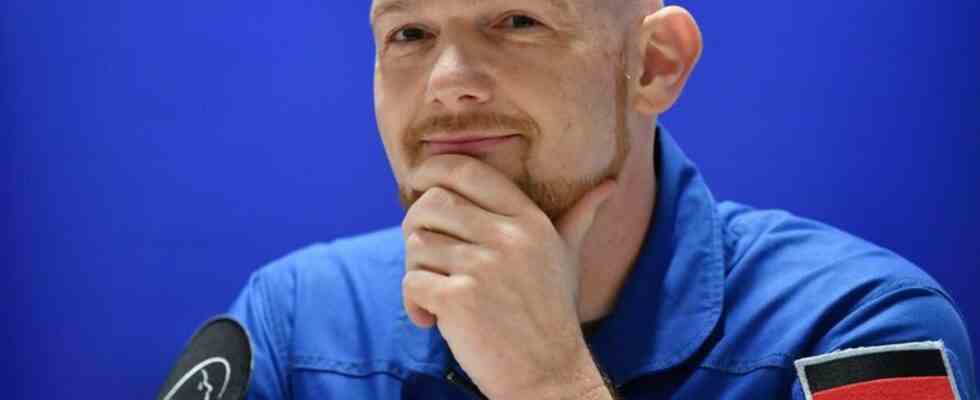space travel
Gerst does not see an Esa astronaut competition on the moon mission
ESA astronaut Alexander Gerst is a geophysicist, volcanologist and former ISS commander. photo
© Martin Schutt/dpa-Zentralbild/dpa
With the “Artemis” program, NASA is planning manned moon missions. It is expected that European astronauts will also be able to fly. A promising candidate does not believe in the elbow mentality.
Astronaut Alexander Gerst doesn’t believe in an internal competition among European astronauts to select participants for a possible moon mission. “We are all good friends in the astronaut corps,” says the 46-year-old after an expedition lasting several days in the Nördlinger Ries, a meteorite crater in Bavaria and Baden-Württemberg that is almost 15 million years old. “It doesn’t depend on having to be better than the other to be able to fly earlier.” All candidates are on a similar level.
The European Space Agency (ESA) is preparing its astronauts to fly to the moon on one of NASA’s planned “Artemis” missions in a few years’ time. So far it looks like there are places for Europeans in three missions, said Gerst. Seven astronauts are currently eligible for this. Gerst emphasized that Europe is an important part of the new moon missions. “We don’t fly as guests, we build half of the spaceship,” he told the German Press Agency.
“We’re very relaxed about it, all of us”
Ultimately, the selection of participants is also about political issues, said Gerst. Because in Europe, the flights would also be distributed between the member states. Gerst sees no competition, not even with the second active German astronaut Matthias Maurer. “We see it very relaxed, all of us, not just Mr. Maurer and I.” In addition, it is still a while until the first moon flight with a European participant. “There are simply more important things than deciding on personnel,” said Gerst about the current situation.
Maurer himself recently said it was a pity “that it is presented as if we were competitors just because we were both on the ISS”. Maybe someone else will be in focus in a few years, said Maurer.
The geophysicist, volcanologist and former ISS commander Gerst, nicknamed “Astro-Alex”, is considered a promising candidate. He has already been to the International Space Station twice. He has now examined rock samples around Nördlingen with NASA candidate Stephanie Wilson. Wilson could become the first woman to walk on the lunar surface.
For half a century, astronauts have been preparing for space flights in the crater in Germany, which has a diameter of 25 kilometers. NASA sent participants of the “Apollo” moon missions to Nördlingen for training for the first time in 1970.
“Reading a story out of rocks”
“We had to learn to read, so that you can read a story out of rocks,” said Gerst about the training. “Each type of rock has its own history.” A meteorite impact like that at Nördlingen leaves behind other stones than an earlier volcano. It’s about memorizing this so that you can then recognize relevant rocks on the moon.
Gerst and Wilson had previously been on an excursion to the Bletterbach Gorge in the Italian Dolomites. The course is to be continued on the Spanish island of Lanzarote in November.
The US space agency Nasa had recently twice canceled an unmanned launch as part of the “Artemis” moon mission due to technical problems. A new start is now planned for the end of September. The difficulties that have arisen do not worry Gerst. It is a test system and something like this is normal. “I would find a false start bad, but a small technical problem not at all,” he said.

